by Amineddoleh & Associates LLC | Oct 31, 2023 |
Good news, thrill-seekers! Here at Amineddoleh & Assoc., not only do we provide exquisite legal services for our clients, we also know where to find a good, real-life scare. Our secret? Follow the haunted art!
Read on for our recap of our firm’s top haunted art-themed blog posts. Then, book a ticket to see the haunted art in-person. No tricks here, each destination is a true, Halloween treat.
Witch Way to the Party?
In this recent blog post, our firm traveled to Asheville, NC to get a glimpse at America’s Largest Home – and one of the most haunted. Click the link for all the details on this spooky mansion, including its most famous ghost-in-residence. Not only that, this historic home has a strange room known as the Halloween Room for visitors to experience, plus its own secret connection to protecting American art from Nazi air-raids in WWII. As if that weren’t enough to encourage a click, this post also has dazzling photos of Asheville’s gorgeous fall foliage.

Biltmore House in Autumn. Image via R.L. Terry at Wikimedia Commons.
The Ghoulishly Gory Frescos in Rome’s Santo Stefano Rotondo
Ever see art so gory it incites a physical response? Click here for more info on this real-life syndrome, known as Stendhal Syndrome, in which grotesque art and cultural heritage causes viewers to have palpitations of the heart. For those wanting to experience the syndrome in real-life, look no further than Santo Stefano Rotondo in Rome. While most tourists on a Roman holiday select beautiful frescos at the Vatican, those who venture to Santo Stefano will see a different sort of religious art. Go for the scenes of torture, stay for the bloody depictions of senseless violence. Plan to go before lunch, or else risk spilling the contents of your own stomach at the foot of these cultural works.
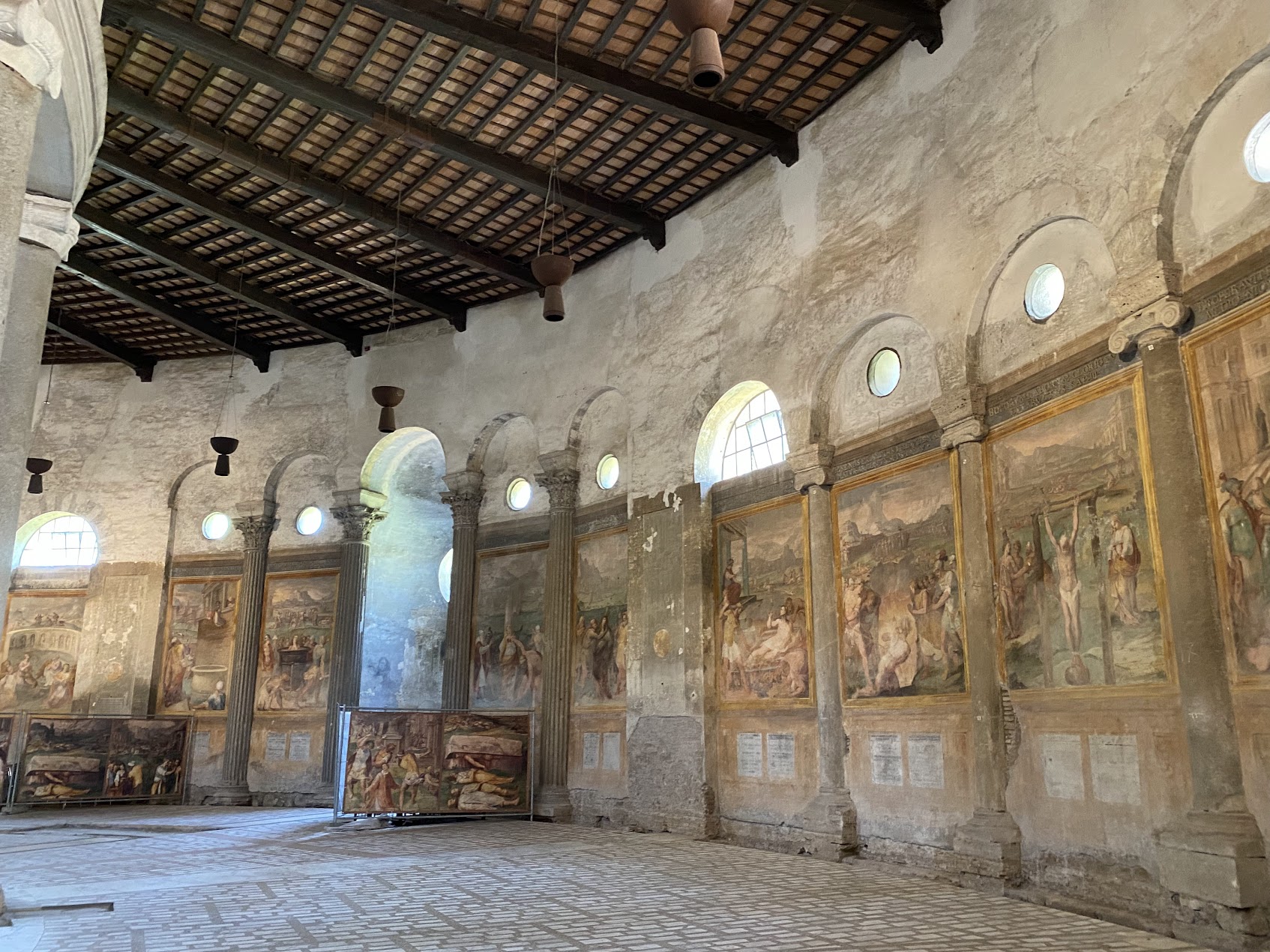
Gory frescoes covering the walls of the church. Image courtesy of Leila Amineddoleh, used with permission.
Cursed Art, from Statues to Paintings
Anglophiles, unite! The National Gallery in London is home to one of the most famous paintings in the world. However, this work is not famous for its artistic qualities (though they are divine). Rather, The Rokeby Venus is better-known for its ability to cause viewers to lose their minds. Click here to read all about this painting’s astonishing – and potentially cursed – provenance. The strange stories behind The Rokeby Venus illustrate how all aspects of a work’s life – including whether or not it is cursed – create its provenance. No matter what your opinion is of The Rokeby Venus’ alleged curse, the documented history of strange occurrences attributed to its ownership has become an important part of the work’s provenance.
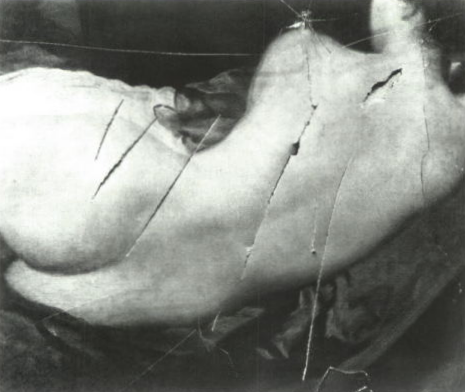
The slashed Rokeby Venus. Image via artinsociety.com.
Haunted Happenings: The Law of Ghosts and Home Sales
If the average Airbnb isn’t scary enough this season, consider visiting a house that’s actually haunted. More and more people are reporting ghosts in domestic settings – and not always friendly ones. Trouble ensues when the place the ghost calls home is up for sale. Lawyers may be faced with the question: is a ghostly presence a condition that must be disclosed prior to sale? Would a reasonable family purchase a house that comes with a frightening ghost? Read more here to discover the actual laws that govern when a family’s new home comes with an unexpected side of ghost.
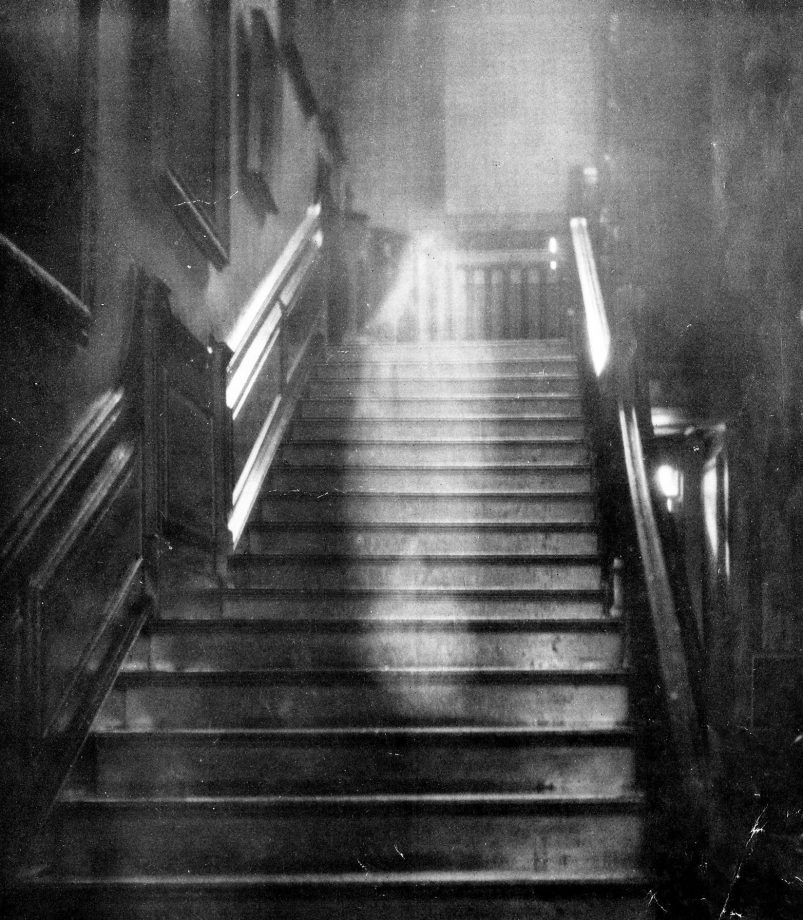
Famous ghost photograph of the Brown Lady of Raynham Hall, originally taken for Country Life (first published in December 1936).
Horrifying Provenance of Monster Manuscripts
This post provides two monstrous holiday destinations in one spooky swoop: ties to Mary Wollstonecraft Shelley’s Frankenstein can be found in both New York City and Oxford, England. Online versions of Shelley’s copious notes and edits for the story can be found on The Shelley-Godwin Archive’s website through the New York Public Library. To pay a visit to the originals, travel to Oxford, where the original transcript are held as part of the Abinger Collection in the Bodleian Library. If that weren’t reason enough to visit Oxford this time of year, stop by Christ Church College for the Harry Potter-esque tour of the storied grounds. Glimpse the inspiration for the wizarding world’s tall towers and cavernous halls on the college campus. Who knows – wizards also might be walking the grounds, masked in their muggle clothes.
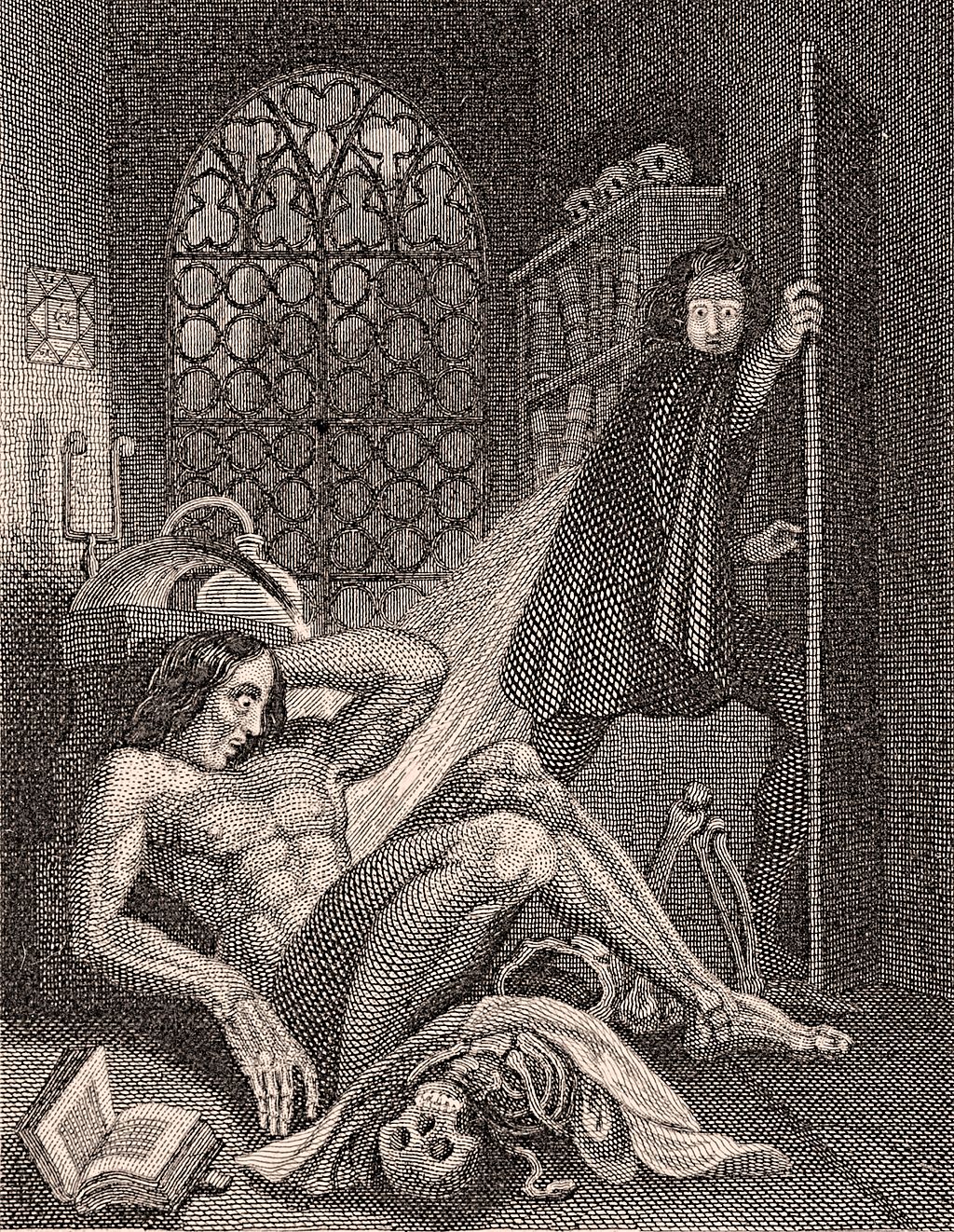
Illustration from the frontispiece of the 1831 revised edition of Frankenstein, published by Colburn and Bentley, London 1831.
The Cat’s Meow: Feline Art Lovers
Word on the street is that the husband of our firm’s founder is dressing as a cat for the second consecutive year this Halloween. While we can neither confirm nor deny the Halloween costumes of our firm’s families (or whether or not, in fact, the members of those families were given the freedom to select their own costumes, or if they were selected for them by their young daughters), click here for a post inspired by our culture’s love for cats in art. Thinking of dressing as a cat this year? As our founder’s husband may say, ‘tis the season!
On behalf of Amineddoleh & Associates, we wish you a safe and Happy Halloween this year!
by Amineddoleh & Associates LLC | Jan 27, 2021 |
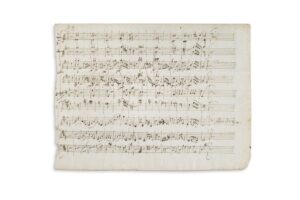
Mozart’s manuscript that sold at Sotheby’s for $413,000 in 2019.
Today we celebrate the 265th anniversary of the birth of Wolfgang Amadeus Mozart with a special entry in our provenance series. Centuries after his birth, Mozart continues to dazzle the public imagination through reinterpretations of his work, including The Magic Flute by Julie Taymor, Academy Award-winning film Amadeus, and the Amazon Prime series Mozart in the Jungle. As the works of a musical prodigy and globally-recognized composer, Mozart’s manuscripts are highly prized by collectors. One such piece, an original score with two minuets dating from 1772, sold for $413,000 (€372,500) at auction in 2019. Notably, Mozart was only 16-years-old when he created the works. The first versions of Mozart’s scores are significant because, unlike Beethoven, the young composer did not make major revisions to his drafts. This means that there are fewer copies in existence, making them both rare and valuable. Indeed, the final hammer price for this piece exceeded the projected value by nearly double.
The minuet score has an esteemed provenance; it was originally kept by Mozart’s sister Nannerl (who was an accomplished musician and composer herself), and ultimately entered the collection of Austrian writer Stefan Zweig. Upon Zweig’s death in 1986, his collection of manuscripts, including Mozart’s handwritten catalogue of works, was donated to the British Museum. The score was later acquired by Swiss bibliophile Jean-François Chaponniere, making it the only copy of an autograph composition by Mozart in private hands. Moreover, this is the only surviving copy of this particular composition in manuscript form. The other manuscripts in this minuet series are currently held by the US Library of Congress and the Gesellschaft der Musikfreunde in Vienna, Austria.
However, Mozart’s manuscripts were already setting records prior to the 2019 auction. In 1987, a private collector paid $4.4 million for a 508-page compendium of Mozart’s scores, which was the highest amount paid for a post-medieval manuscript at the time. To compare, the previous record for a musical manuscript was $544,500 for an incomplete copy of Igor Stravinsky’s “Rite of Spring” in 1982. The 1987 record was later surpassed in 2016, when a handwritten score of Gustav Mahler’s Second Symphony was auctioned for $5.6 million. Although the value of classical music compositions has risen sharply in the past few decades, this phenomenon is not free from controversy. A score attributed to Beethoven failed to sell at Sotheby’s when scholars questioned the authenticity of the work. This demonstrates the importance of establishing provenance for all types of collectible items, even those tied to musical geniuses. Fortunately, the minuet score posed no such problems, making it a true prize.
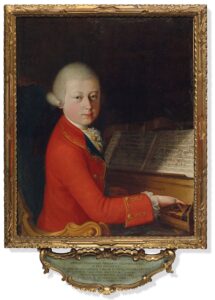
Sold for $4.4 million, the portrait of the teenage Mozart has an alluring provenance.
But private collectors’ interest in Mozart is not limited to musical manuscripts; a rare portrait of the composer as a teenager fetched €4,031,500 at auction soon after the minuet score was sold in 2019. The painting has an impeccable provenance, as it was referenced in a letter from Mozart’s father Leopold to his wife Maria Anna, dated January 1770. In 1769, Mozart had toured Italy with his father. At the age of 13, he was already a celebrity recognized for his remarkable musical talent. During Mozart’s stay in Verona, a passionate music lover commissioned a portrait of the prodigy. This is one of only five confirmed portraits of the composer painted during his short life.
What is unusual for this painting, aside from its glimpse of the composer as a young man, is the thorough documentation of the circumstances leading to its creation. Pietro Lugiati, Receiver-General for the Venetian Republic and member of a powerful Veronese family, commissioned the work while hosting Mozart and his father in Italy. The portrait depicts the teenager in a powdered wig and red frock before a Renaissance harpsichord in Lugiati’s music room. By all accounts, Lugiati was so in awe of the young Mozart he described the child as a “miracle of nature in music” in a letter to the composer’s mother and essentially detained the Mozarts for two days, until the portrait was completed.
Curiously, despite the references to the painting in contemporaneous documents, the artist remains unconfirmed. While it is likely that the painter was leading Veronese artist Giambettino Cignaroli (he referenced Mozart’s visit to his studio), an alternative attribution is Saverio della Rosa, Cignaroli’s nephew. The painting could also have been a collaboration between the two artists. Although firm attribution remains elusive, the painting was an immediate success – one of the world’s oldest newspapers, La Gazzetta di Mantova, praised the work a mere five days after it was finished – a fitting tribute to a great musician.
The Mozarteum (the house where Mozart was born) in Salzburg, Austria is currently closed due to COVID. And it is not possible for most people to purchase original manuscripts of the musical prodigy, but we can celebrate the musical genius’ birthday by listening to one of over 600 musical compositions he wrote. Happy birthday Wolfgang!
by Amineddoleh & Associates LLC | Dec 14, 2020 |
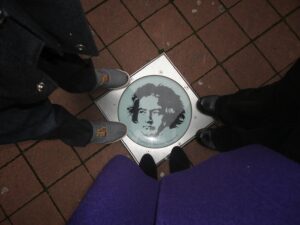
Street tile in Bonn, Germany (copyright: Leila Amineddoleh)
This month marks the 250th birthday of the legendary Ludwig van Beethoven. (There is no record of his actual birthdate, but his baptism on December 17, 1770 has led many to believe that he was born on December 16.) Recognized as one of the greatest figures in the world of classical music, his compositions are readily recognizable to people all over the world, including his dramatic Fifth Symphony, Fur Elise, the Second Movement of the Seventh Symphony (familiar to some from The King’s Speech), and the Ode to Joy from the final movement of his Ninth Symphony. Beethoven’s genius was instrumental in ushering in a new type of classical music, during a career that straddled the shift from the Classical to the Romantic era.
With his talent obvious from an early age, Beethoven began his musical career as a child. He was a virtuosic pianist and violinist, and clearly a talented composer. He gained fame during his lifetime, but also suffered the tragic loss of his hearing. However, his early life was not free from difficulty. He received harsh and intense musical training, often being dragged from bed in the middle of the night to practice the keyboard. By his late 20s, he began noticing difficulties with his hearing. By his mid-40s, he was totally deaf. Despite his medical condition, he persevered and continued to write staggeringly beautiful music that stirs audiences to this day.
As the writer of emotional and complex music, it is perhaps no surprise that he also wrote beautiful prose. He famously authored a celebrated love letter to a mysterious “Immortal Beloved.” The passionate letter was never sent to its intended recipient, whose identity is still a subject of debate. Beginning with “My angel, my all, my own self” and ending with “Ever thine. Ever mine. Ever ours,” the romantic missive has led to questions about the letter’s inspiration. (A translated copy of the letter can be found here.) Speculation about the woman’s identity inspired the film “Immortal Beloved,” whose theory of the identity is most certainly faulty. (Unfortunately, the film also represented Beethoven as a caricature of a tormented lothario and misunderstood artist.) A discussion about more probable candidates can be found here.
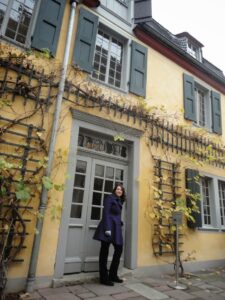
Amineddoleh & Associate’s founder at the Beethoven Haus
Besides the mystery surrounding the inspiration for the letter, its provenance is also interesting. The letter was written in pencil on 10 small pages, in the composer’s inconsistent handwriting. It was found in his estate after his death, and it remained with Anton Schindler, who had served as Beethoven’s secretary for a number of years, until his death. Unfortunately, Schindler was known to alter Beethoven’s personal documents and profited by plundering the composer’s legacy. Upon Schindler’s passing, the letter was bequeathed to Schindler’s sister, who in turn sold it in 1880 to the Berlin State Library. It remains there today. However, the date year of the writing was unclear until the mid-20th Century. An analysis of the paper’s watermark was completed in the 1950s, revealing that it was written on July 6-7, 1812 during a stay in Teplice, in the modern day Czech Republic. This is supported by a later letter by the composer to Rahel Varnhagen, suggesting that he had a meeting with his “Immortal Beloved” on July 3, 1812.
As with other famed composers and artists, forgeries of letters and manuscripts by Beethoven have cropped up over the years. Just four years ago, a purported manuscript by Beethoven failed to sell at Sotheby’s due to doubt cast upon its authenticity by musicologists and Beethoven scholars. One point of contention is the handwriting used in the manuscript; in particular, the notation of the natural sign. At Amineddoleh & Associates, we are proud to assist clients in authentication matters of all kinds, including documents and manuscripts, both musical and non-musical.
2020 was slated to be a year celebrating Beethoven’s birthday as one of the titans of the classical music world, with a calendar of performances and celebrations. Sadly, concertgoers were sorely disappointed as the events were cancelled due to COVID-19. However, in celebration of Beethoven’s staggering genius, WQXR (NY Public Radio) is currently hosting the program Immortal Beethoven. The station is available to listeners around the world. In addition, Beethoven Haus (the composer’s birthplace) in Bonn, Germany is hosting events for the composer this year. Due to the COVID-19 pandemic, the events are hosted online. For more information, visit the museum’s website. And for some lighter Beethoven entertainment, enjoy this clip from SNL.
Happy birthday Ludwig!








